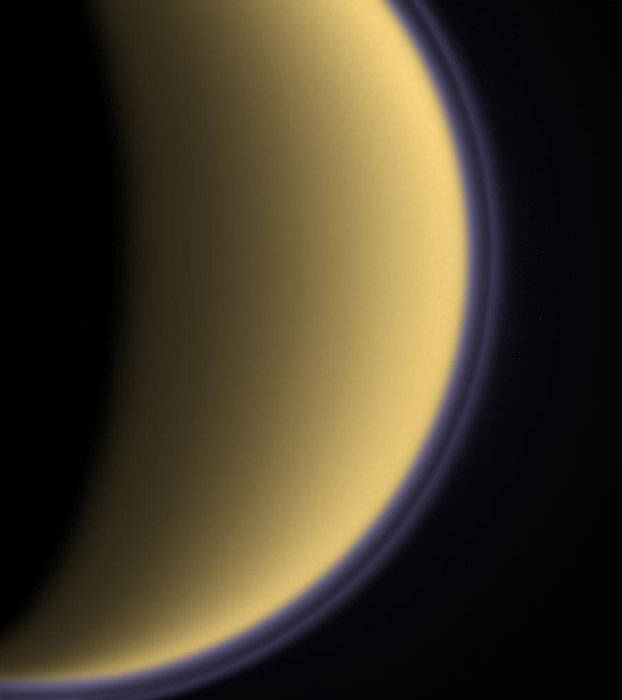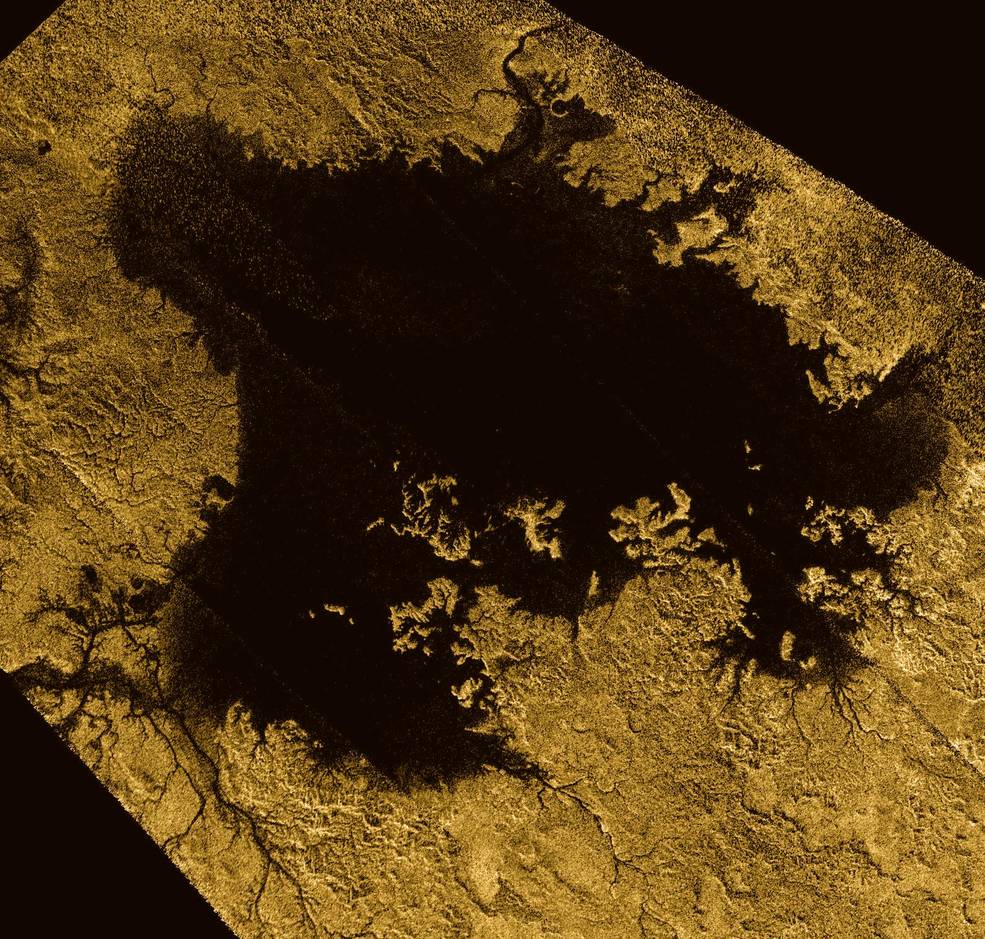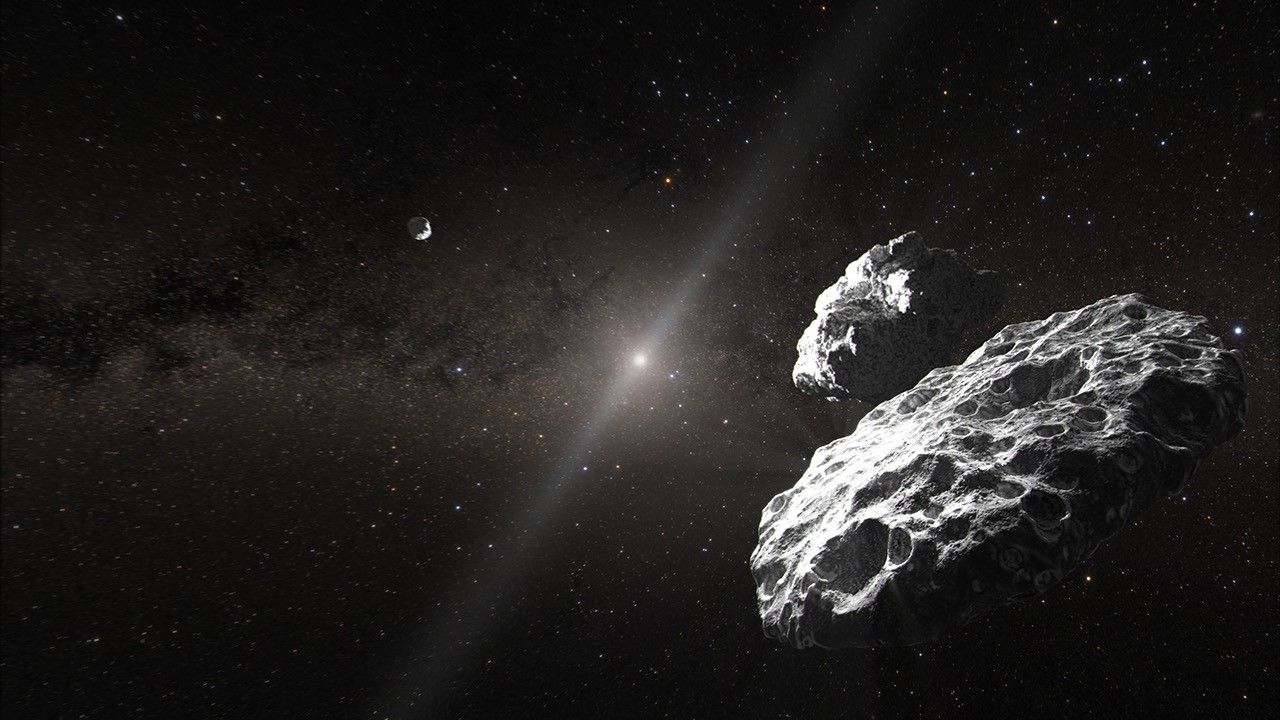The planet Saturn has intrigued us for centuries. Dutch astronomer Christiaan Huygens in 1655 first accurately described Saturn’s rings as a disk surrounding the planet in 1655. Although Italian astronomer Galileo Galilei had observed them when he first turned his telescope toward Saturn in 1610, his telescope did not have enough power to discern their true nature. Huygens also discovered Saturn’s largest moon, Titan. Italian astronomer Giovanni Cassini discovered four of Saturn’s moons and divisions within the planet’s rings. In the late 1970s and early 1980s, three spacecraft, Pioneer 11 and Voyager 1 and 2, completed reconnaissance flybys of Saturn, returning stunning images and a wealth of information about the planet, its rings, and numerous satellites. But as often happens, this new information just raised more questions, making scientists eager to observe Saturn over a longer period of time.


Left: Cassini-Huygens shortly after its arrival at Cape Canaveral; the Huygens
probe is the gold disk shaped object on the left of Cassini. Right: Illustration
of Cassini-Huygens and its scientific instruments.
Cassini-Huygens began in 1989 as a joint project among NASA, the European Space Agency (ESA), and the Italian Space Agency (ASI), with overall management by NASA’s Jet Propulsion Laboratory in Pasadena, California. To accomplish one of the most ambitious planetary projects ever attempted, NASA built the Cassini Saturn orbiter, ASI provided its high-gain antenna and several science instruments, and ESA built the Huygens lander to make a descent and soft landing on Saturn’s largest moon Titan. The Cassini orbiter carried 12 science instruments grouped in three disciplines to study the Saturn system. A suite of four optical remote sensing instruments, mounted on the spacecraft’s remote sensing pallet, studied the ringed planet in the visible, infrared, and ultraviolet ranges of the electromagnetic spectrum. Six instruments studied the dust, plasma, and magnetic fields around Saturn. Two microwave remote sensing instruments used radio waves to map atmospheres, determine the masses of Saturn’s moons, analyze the size of particles in the planet’s rings, and probe through Titan’s dense atmosphere to identify surface features. The Huygens lander carried six instruments to study Titan during its descent through the atmosphere and upon reaching the surface. The lander measured the physical, chemical, and electrical properties of the atmosphere including any suspended particulates, recorded wind speed during the descent, imaged the surface during the descent and after landing, and measured the physical properties of Titan’s surface.


Left: Launch of Cassini-Huygens. Right: Trajectory of Cassini-Huygens showing the gravity-assist flybys required to reach Saturn.
Cassini-Huygens, at 12,593 pounds one of the heaviest planetary probes ever launched, lifted off on Oct. 15, 1997, on a Titan IVB/Centaur rocket from Cape Canaveral Air Force Station, now Cape Canaveral Space Force Station, in Florida. Although the spacecraft launched on the most powerful expendable launch vehicle then available, it still required additional velocity to reach Saturn, relying on four gravity assist maneuvers. Its seven-year journey took it past Venus twice, the Earth once, and Jupiter once, gaining more velocity with each flyby for the final trip to Saturn. With the Galileo spacecraft in orbit around Jupiter at the time of Cassini’s flyby, the two spacecraft conducted joint science observations of the planet.



Left: Test image of Saturn taken on Oct. 31, 2002, with Titan as small dot at upper left. Middle: One of the first images of Titan taken in July 2004, showing the purple haze layer in the upper atmosphere.
Right: Illustration of the descent of the Huygens probe to the surface of Titan.
A test of Cassini’s camera on Oct. 31, 2002, 20 months before arriving to Saturn, provided the first image of the ringed planet and its largest moon Titan from a distance of 177 million miles, or nearly twice the Earth-Sun distance. On July 1, 2004, with the Huygens lander still attached, Cassini entered an elliptical orbit around Saturn, the first spacecraft to do so. Thus began an incredible 13-year in-depth exploration of the planet, its rings, and its satellites, with scores of remarkable discoveries. Within the first few months, Cassini completed the first three of more than 100 flybys of Titan. On Dec. 24, 2004, Huygens separated from Cassini, and on Jan. 14, 2005, entered Titan’s dense atmosphere. Slowed by a parachute, the 700-pound probe made a soft landing on Titan, marking the furthest landing by any spacecraft in the solar system, and returned 376 images and science data from the surface.



Left: Composite image of the icy moon Enceladus taken in 2005. Middle: Mosaic of radar images of Ligeia Mare, a hydrocarbon sea on Titan. Right: The wavemaker moon Daphnis disturbing ring particles from within the Keeler Gap




Cassini images of Saturn’s icy mid-size moons (left to right) Rhea, Dione, Tethys, and Mimas.
Cassini’s initial four-year mission ended in June 2008, but the spacecraft earned two mission extensions. Cassini’s long mission enabled scientists to observe Saturn for nearly half of its 30-year orbit around the Sun, observing hexagonal cloud patterns around Saturn’s north pole and a long-lived storm that circled the planet’s northern hemisphere. Cassini made remarkable discoveries during 162 flybys of several of Saturn’s 62 moons. Among these, the spacecraft discovered evidence of ice volcanism on Enceladus, hydrocarbon lakes on Titan, the interaction of some of the small moons imbedded within the rings, and in general finding that each moon appeared unique, reflecting its specific history within the Saturnian system. On Sept. 15, 2017, during its 294th orbit around the planet, its attitude control fuel virtually exhausted, Cassini plunged into Saturn’s atmosphere, continuing to send data until the very last moment. Controllers chose this destructive end to safeguard against the remote possibility that Cassini could crash on one of Saturn’s moons, contaminating it with Earth microorganisms. Although the spacecraft may be gone, the treasure trove of information it returned about Saturn will keep scientists busy for many years to come.

Cassini-Huygens by the numbers.























